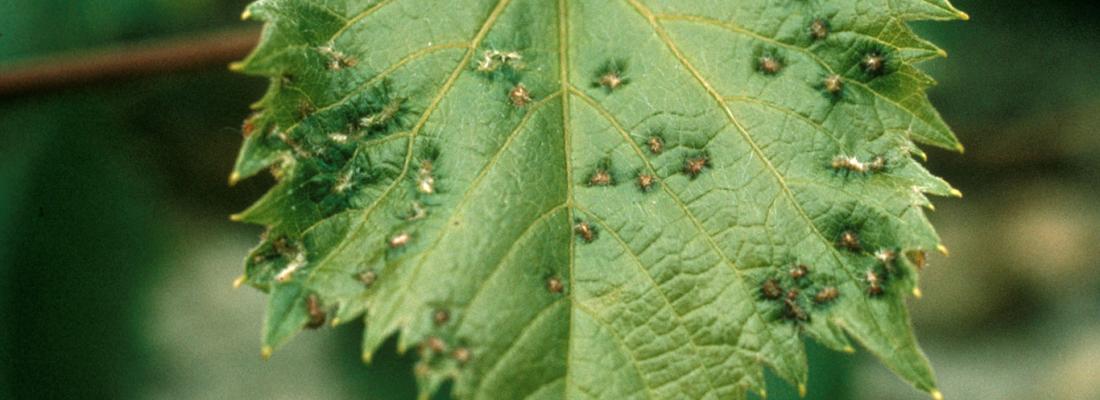Agroecology Reading time 3 min
Phylloxera: genomics sheds light on the history of the invasion of French vines and unveils new family of genes
Published on 23 July 2020

Photo: damage of phylloxera on a vine leaf
The scientific consortium on the phylloxera (Daktulosphaira vitifoliae) genome was created in 2011 with the goal to shed new light on the invasion that caused the phylloxera crisis in Europe in the 19th century, and to better understand the potential the insect has to adapt thanks to the deciphering of its genome. The consortium piloted by INRAE brought together more than 70 scientists from eight countries including several research units from CNRS in France. The Institute mobilised complementary skills to coordinate the research, calling upon experts in diseases of the vine, insect genomes, and bioinformatics. Researchers also benefited from technical support from the INRAE BIPAA platform (BioInformatics Platform for Agro-ecosystems Arthropods) which gave them access to genomic resources on insects associated with agro-ecosystems, and enabled them to carry out extensive analyses.
Unlocking the history of an invasion
The researchers organised sampling campaigns of the pest in Europe and the United States and carried out genomic analyses on individual insects. Their findings shed light on the 19th-century infestation and confirmed that Vitis riparia, a wild type of American vine, is indeed the source of the phylloxera that invaded Europe. More specifically, wild varieties located along the Mississippi River are believed to be responsible for introducing the pest into French vineyards. It is these populations that made their way to Europe that are believed to have then spread to the rest of the world. The phylloxera crisis destroyed half of French vines, putting a lasting dent in the economy and geography of viticulture. Ultimately, it was resistant vine rootstock from the US that saved viticulture and allowed it to flourish once again in Europe.
Ground-breaking discoveries on the biology of an insect
Genomic analyses have allowed science to unveil the existence of a new family of genes, the biggest ever identified to date in a genome. Indeed, it includes nearly 2 700 genes (large gene families known to science rarely exceed 200), which represents more than 10% of the entire phylloxera genome. These genes are believed to be essential to interactions between phylloxera and grapevines. They code for small secreted proteins, called “effectors”, which are thought to intervene in de-activating the basic defences of the plant. In its indigenous region, the co-evolution between plant and pest is believed to have allowed the plant to resist attack, whereas in Europe, cultivated vines did not have an adapted system of defence to ward off this new pest and its lethal cocktail of effectors.
These new findings have shed much light, for example on the evolution of insects, especially aphids, and on the genetics and selection of rootstock that are resistant to phylloxera. Both topics are being studied at INRAE. This new knowledge also serves to improve our understanding of biological invasions and their potentially disastrous consequences on agriculture and therefore on society and the economy.
|
Reference Claude Rispe, Fabrice Legeai, et al. The genome sequence of the grape phylloxera provides insights into the evolution, adaptation and invasion routes of an iconic pest, BMC Biology (BMCB-D-19-01125R2) – 23 July 2020 |
